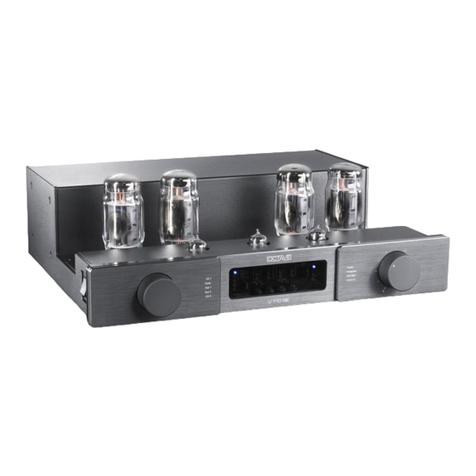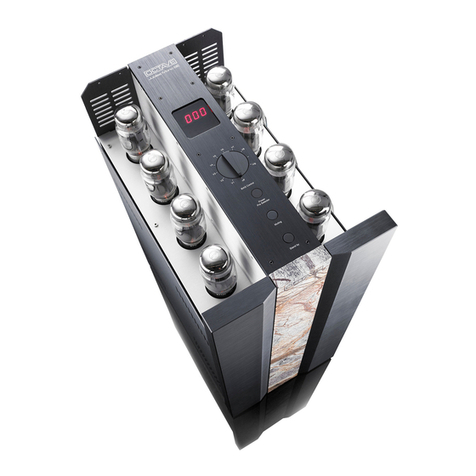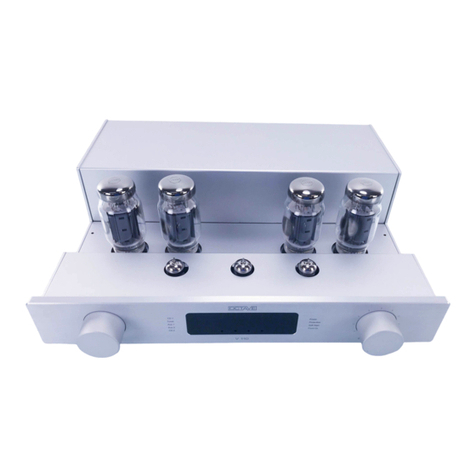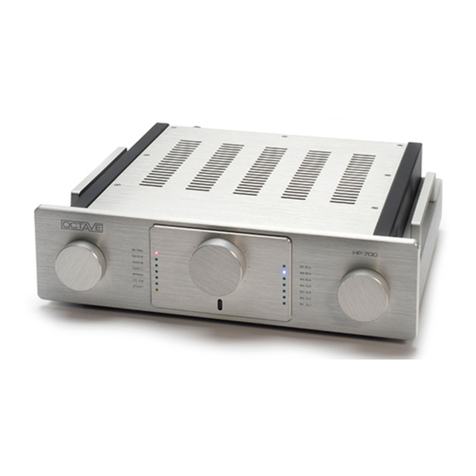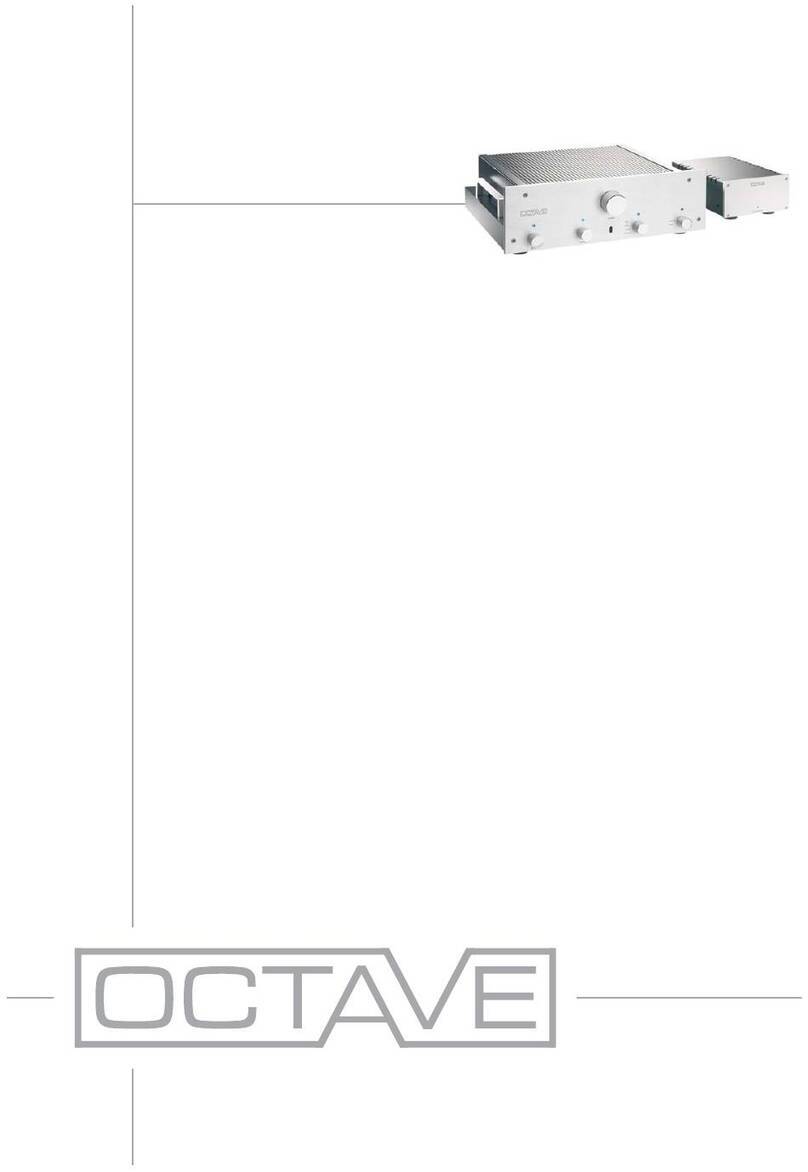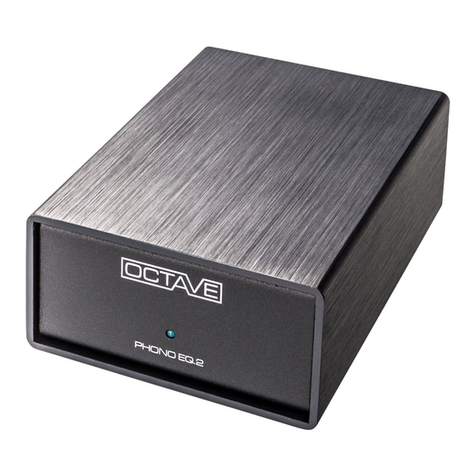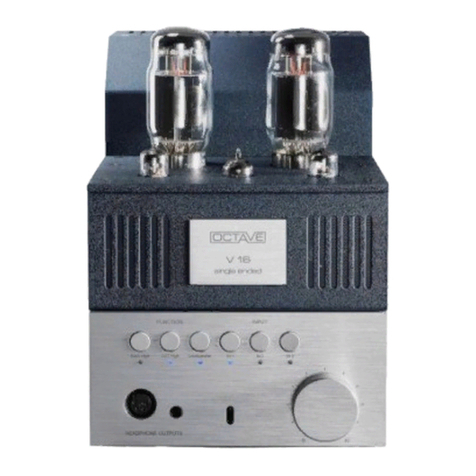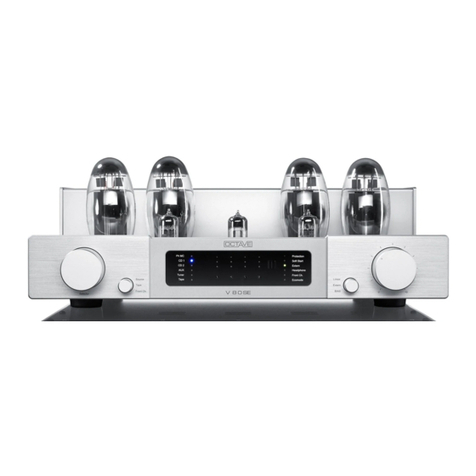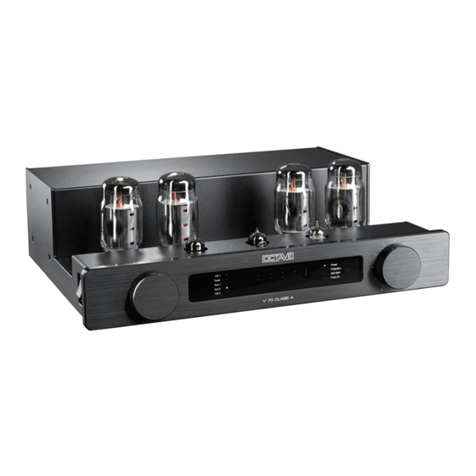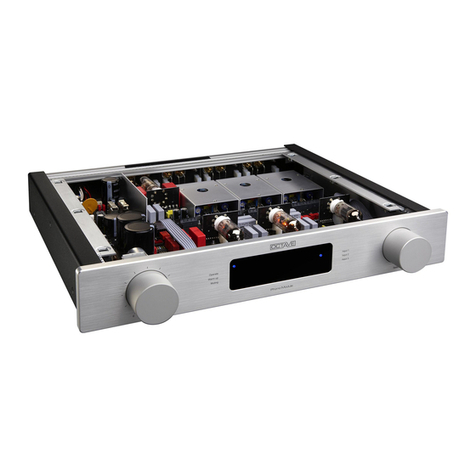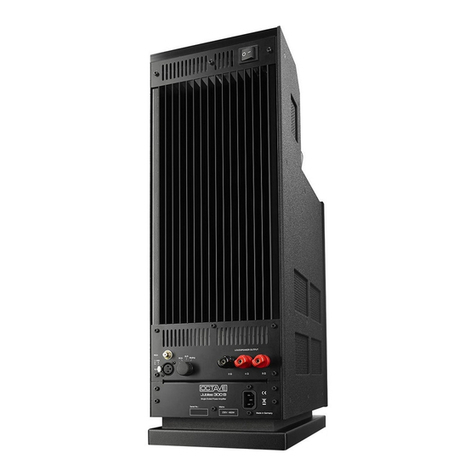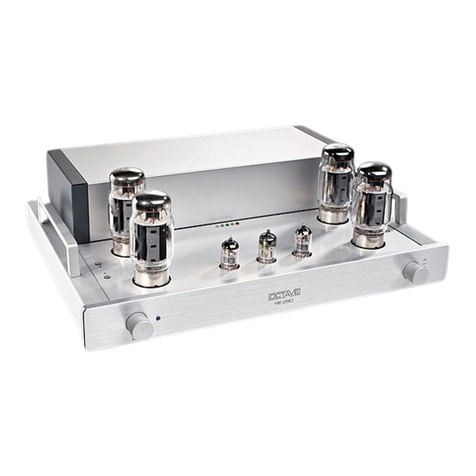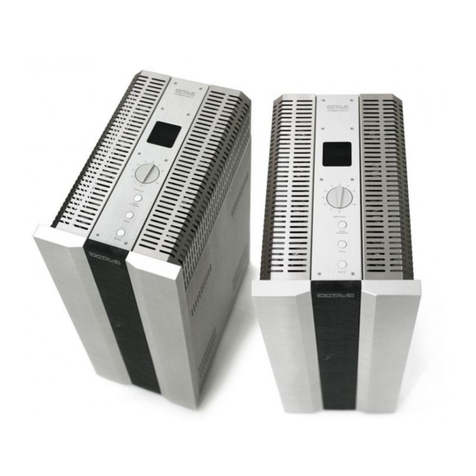2. SAFETY INSTRUCTIONS
2.1. Before you begin
Before using your V 50 MK2, please remove the protective cover and install the output tubes
supplied with your amplifier in the appropriate sockets (see Removing the Cover and Tube Lay-
out). Replace the cover before switching on.
Operating the amplifier without its protective cover is dangerous and not recommended.
In case of emergency: disconnect the plug from the mains supply
Never use an amplifier that is damaged or faulty. Make sure that it cannot be used until it has
been repaired by a qualified service engineer.
Make sure that there is easy access to the IEC socket and power cord.
Do not open the case
There are dangerously high voltages and hot tubes inside this equipment. To avoid a burn or the
risk of electric shock, never allow anyone except qualified personnel to open the case or remove
the cover.
Servicing and maintenance
For reasons of safety, please ensure that servicing, repairs and other modifications to OCTAVE
equipment are carried out only by a qualified technician. Fuses should also only be changed by a
qualified technician. Always replace fuses with ones of the same type and rating. If your amplifier
requires servicing, please ship or take your equipment directly to OCTAVE or to one of our au-
thorized service centres.
Explanation of the warning symbols:
The exclamation point within an equilateral triangle is intended to alert
the user to important operating and maintenance instructions.
The lightning flash with arrowhead symbol within an equilateral triangle is
intended to alert the user to the presence of uninsulated 'dangerous volt-
ages' within the product's enclosure that may be sufficient to constitute a
risk of electric shock to persons.
Before connecting
Make sure that the voltage of your amplifier matches your electricity supply voltage.
Grounding
This amplifier is a protection class 1 device (with an earth conductor). To exclude the risk of elec-
tric shock in the event of a fault, the unit must be grounded. Use a three-core mains cable with a
three-pin plug (supplied).
Safety warning: hot tubes!
Warning: Remove the protective cover at your own risk. OCTAVE accepts no responsibility for
injuries caused by the removal of this cover.
5



